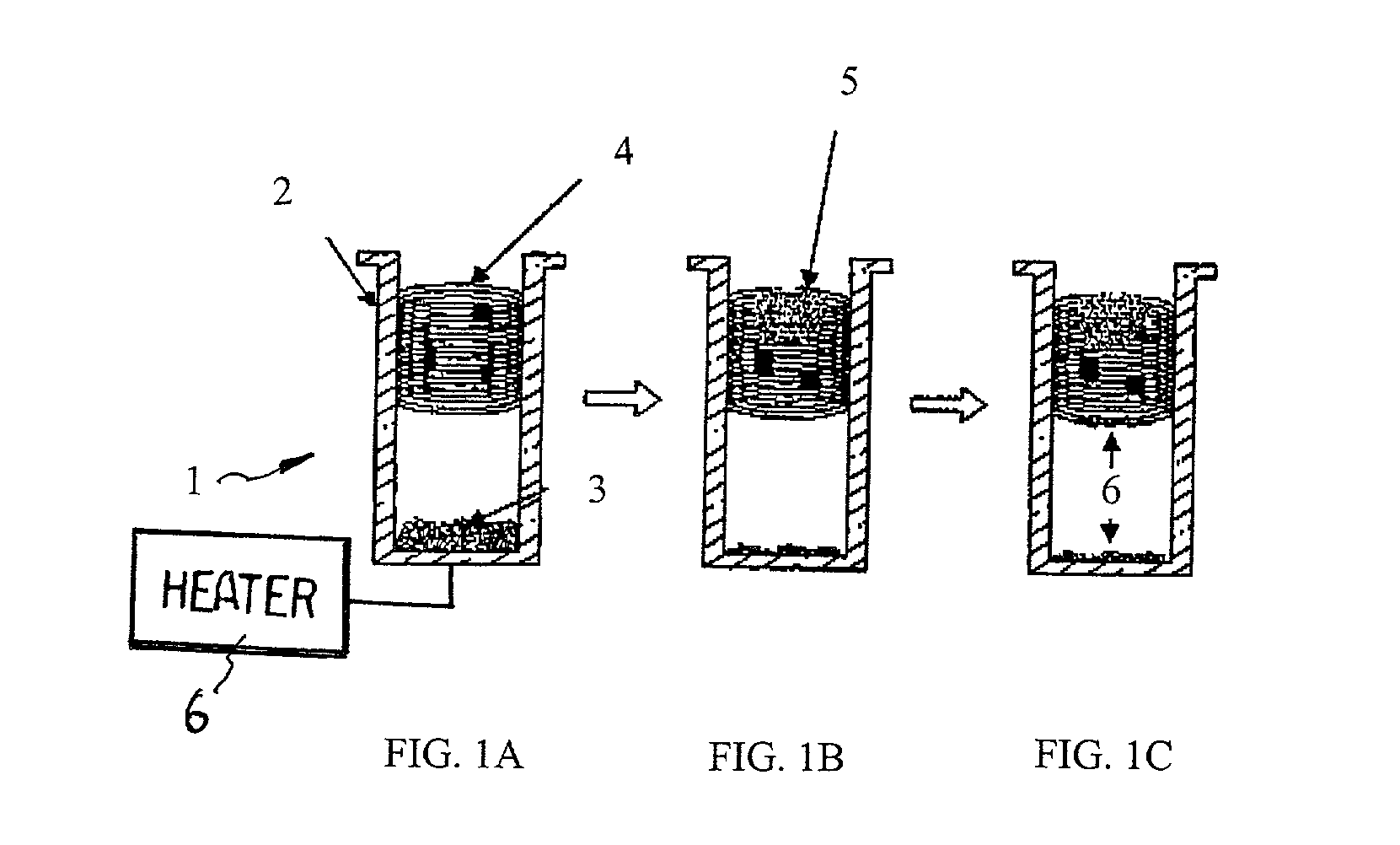Vapor deposition and in-situ purification of organic molecules
- Summary
- Abstract
- Description
- Claims
- Application Information
AI Technical Summary
Problems solved by technology
Method used
Image
Examples
Embodiment Construction
[0013] FIGS. 1A-1C show an embodiment of the apparatus of the present invention. The apparatus 1 includes a crucible 2 having an outer surface and an inner surface. The inner surface forms an interior of the crucible 2 and includes a bottom on which a crude material 3 is placed when the apparatus 1 is in use. Opposite the bottom is an opening leading from the interior of the crucible 2 to the exterior of the crucible. In embodiments, the crucible can be a hollow cylinder having one closed end forming the bottom of the cylinder. The crucible 2 is made of a refractory non-metallic material. The term "refractory" as used herein describes a material capable of withstanding a temperature at which an organic molecule will sublime or evaporate. The term "non-metallic" as used herein describes a material that is a semiconductor, an insulator, or an electrical conductor consisting essentially of an element that is not a metal. In embodiments, the crucible 2 can be made from a non-metallic ma...
PUM
| Property | Measurement | Unit |
|---|---|---|
| Pressure | aaaaa | aaaaa |
| Temperature | aaaaa | aaaaa |
| Mass | aaaaa | aaaaa |
Abstract
Description
Claims
Application Information
 Login to View More
Login to View More - R&D
- Intellectual Property
- Life Sciences
- Materials
- Tech Scout
- Unparalleled Data Quality
- Higher Quality Content
- 60% Fewer Hallucinations
Browse by: Latest US Patents, China's latest patents, Technical Efficacy Thesaurus, Application Domain, Technology Topic, Popular Technical Reports.
© 2025 PatSnap. All rights reserved.Legal|Privacy policy|Modern Slavery Act Transparency Statement|Sitemap|About US| Contact US: help@patsnap.com


